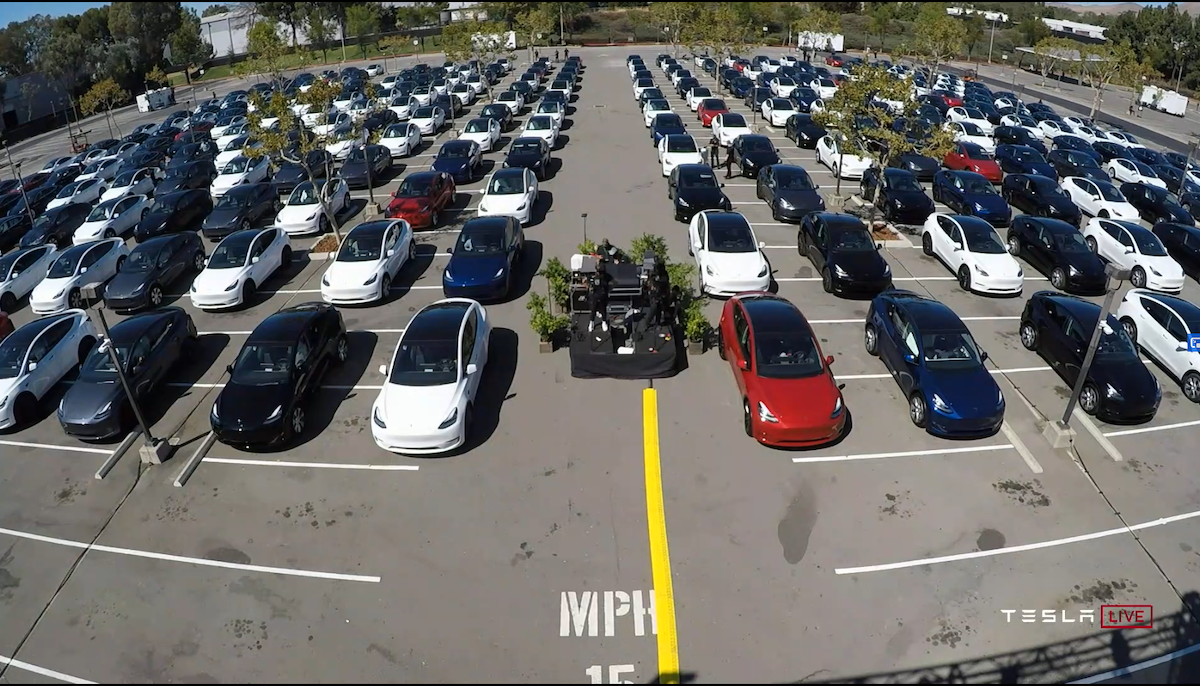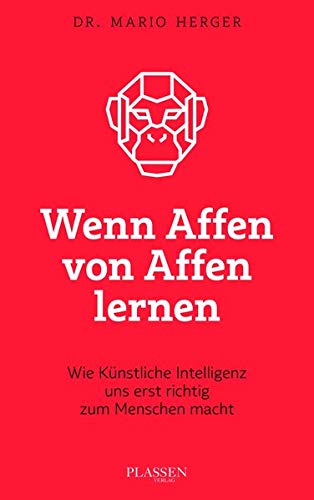When Tesla holds one of his days on special topics, there is usually so much that you don’t know where to start. So where do I start? Maybe first the most important slide to start with, and then the details:

Thanks to new battery cell designs and manufacturing methods, Tesla expects a 54 percent increase in range, a 56 percent reduction in costs per kWh, and a 69 percent reduction in production facility costs. These changes are currently being tested in the 4th generation in a 10 GWh pilot plant in Fremont and should go into full production in the next 12 to 18 months and then go into full capacity in 3 years.
Details
Elon Musk and his team introduced the innovations at the shareholder meeting, which was held in a parking lot in Fremont and looked like a drive-in movie theater with shareholders and investors sitting in their Teslas.
Was ist Intelligenz im künstlichen und menschlichen Sinn? Können Maschinen Bewusstsein entwickeln und wie würden wir das erkennen? Sind Maschinen fähig, Empathie zu zeigen und zu fühlen?
Das Buch verdeutlicht die vielfältigen Chancen und positiven Auswirkungen von KI auf alle Aspekte des gesellschaftlichen und wirtschaftlichen Lebens.
Spannende Gespräche mit KI-Vordenkern und KI-Praktikern aus dem Silicon Valley vermitteln dem Leser wertvolle neue Erkenntnisse und Mindsets. Ein unentbehrlicher KI-Ratgeber für Gegenwart und Zukunft!
€24,99 | 304 Seiten | 27.2.2020
Amazon | Plassen-Buchverlag
New Battery Design
Most important innovation: Tesla has developed a new type of battery called 4680, which has a diameter of 46mm and a height of 80mm. This will replace the 18650/1865 and the 21700/2170 cells currently installed in the models. Not only is the battery cell form factor new, but also the chemistry, anode and cathode, the production process, and how the batteries are integrated into the vehicle structure.

Although it was possible to store 50 percent more energy and save costs from the transition from the 1865 to the 2170 cells, this also increases the problem of heat dissipation and the charging speed during rapid charging. A new battery design was needed.

Instead of the previous simple contact for charging, the metal of the batteries is folded on both sides (anode and cathode) during winding, creating a continuous series of contacts.

This allows the loading speed to be kept the same almost regardless of the diameter.

In total, the battery should be able to hold 5x more energy and thus provide 16 percent more range at 6x performance.

Production Process
The production process itself consists of several parts: Mixing the electrolyte components, dissolving the dry components in a liquid, coating the metal with the electrolyte, drying the electrolyte, winding, and finally filling into a can and placing and welding the cathode and anode.

The fewer steps the process has and the faster the machines can run, the fewer factories are needed to produce batteries. Tesla has succeeded in simplifying the process both by eliminating the need to dissolve the dry electrolyte powder for coating and then dry it, and by applying it directly to the metal. At the same time, Tesla Grohmann Automation has also increased the general throughput speed during production. By eliminating these steps, energy consumption and thus the impact on the environment is reduced by a factor of 10.
Formation
Sobald die Batterien fertig sind, kommen sie in die Formation, wo sie zum ersten Mal be- und entladen werden. Dank des neuen Formfaktors und neuer Elektronik und Maschinerie, kann auch dieser Prozess viel rascher durchgeführt werden.

Elektrodenmaterialien
In lithium ions, an electrode material previously used is lithium and graphite. Tesla is now replacing graphite with silicon, which is much cheaper and the second most common element. Until now, there was one challenge that prevented mass use in battery cells, and that is the property of silicon to expand to four times its volume when heated and to disintegrate after many charging cycles.

Tesla has tamed the problem in that the raw silicon is coated with its own conductive polymer layer.

Cathode Material
Cathode materials have so far been iron, nickel-manganese and cobalt. Tesla already had only a fraction of cobalt in its batteries, and even that was sustainably promoted, than other manufacturers. With the new 4680 battery, cobalt is completely eliminated and instead different cathode materials are used, depending on the application.

Iron-based for long life, a nickel-manganese alloy for long distances and a nickel-manganese alloy with high nickel content for weight-sensitive applications.

Raw Materials
Tesla also pointed out that lithium is not a rare raw material. In Nevada alone, there would be enough lithium deposits to convert all 300 million cars in the U.S. to battery electric cars from this source. Tesla itself has secured raw materials in the order of TWh of battery cells. The lithium extraction itself is done by sulfuric acid-free saline extraction.
Tesla aims to produce battterie cells in terawatt hour size.

Recycling
Until now, Tesla has outsourced battery recycling to third parties, but now wants to do the recycling itself at a factory in Nevada. This is also because recovered material is cheaper than the raw material itself.

Structure
Whereas the approach in the past was to build a battery pack separately, Tesla will in future integrate the new battery cells into the vehicle structure. While the fuel tank of the first aircraft was a separate container that was built into the wings, the wing itself became the fuel tank. This is also the case here. The structure becomes the battery, the battery becomes the structure. This not only saves more weight than would be expected by omitting the battery pack parts, but also makes the vehicle stiffer, improves its driving dynamics, and is safer in side collisions thanks to a more compact arrangement of the battery cells away from the edges of the vehicle.

In addition, Tesla has put into operation a new mold casting machine for Model Y, which produces a large aluminum alloy mold in one piece. These are the respective front and rear parts of the vehicle. This not only simplifies the production process by producing and assembling only one part instead of 370, it also makes the vehicle lighter overall.

To achieve this, Tesla had to recreate the manufacturing process for such a large part in terms of temperature. This new production process also requires almost a third less production space.

Berlin
Elon Musk has confirmed that battery cells will also be manufactured in the new Tesla factory in Grünheide, Berlin-Brandenburg.
Result
All these changes, some small, some large, cumulatively lead to the cost reductions and range increases of Tesla vehicles. Tesla also hopes that the previous flattening of the cost reduction curve for one kWh can be significantly reduced again.

Tesla expects thus in the coming years to be able to bring also electric cars on the market that around 25.000 dollar lies. Tesla has not yet found a name for this vehicle.

And More
What else came: the new Model S Plaid can be ordered immediately. $139.990 in the basic version with triple engine with less than 2(!) seconds from 0 to 60 mph (0 – 96 km/h), more than 520 miles (800 kilometers) range and top speed of 200 miles per hour (320 km/h). It will be delivered late 2021.
Was ist Intelligenz im künstlichen und menschlichen Sinn? Können Maschinen Bewusstsein entwickeln und wie würden wir das erkennen? Sind Maschinen fähig, Empathie zu zeigen und zu fühlen?
Das Buch verdeutlicht die vielfältigen Chancen und positiven Auswirkungen von KI auf alle Aspekte des gesellschaftlichen und wirtschaftlichen Lebens.
Spannende Gespräche mit KI-Vordenkern und KI-Praktikern aus dem Silicon Valley vermitteln dem Leser wertvolle neue Erkenntnisse und Mindsets. Ein unentbehrlicher KI-Ratgeber für Gegenwart und Zukunft!
€24,99 | 304 Seiten | 27.2.2020
Amazon | Plassen-Buchverlag
Video
Here is the recording from the Battery Day:
This article was also published in German.


Nice summary, thanks Mario!
LikeLike